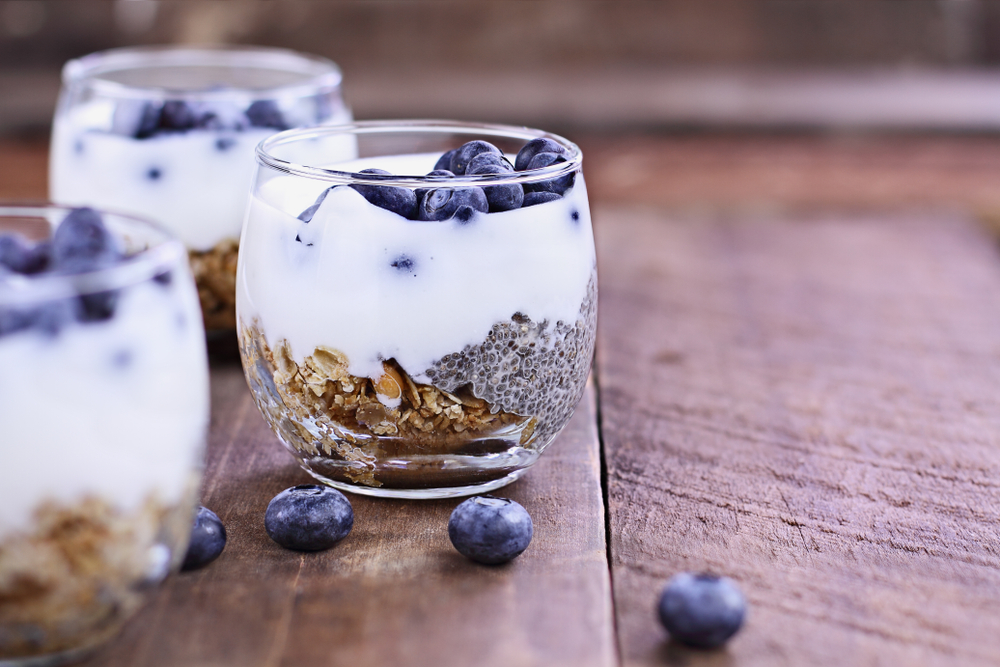By: Theresa Greenwell
Probiotics are live microorganisms, bacteria or yeasts, that support overall health. These microorganisms come in a variety of strains that can colonize the gut and thereby work to help maintain optimal bacterial balance, but there is a lot of confusion surrounding this tiny-but-mighty microflora! We’ve got the breakdown with everything you need to know about probiotics below.
Probiotics History:
Starting in ancient Egypt, physicians used probiotics in the forms of fermented or soured foods for specific health-related conditions. For instance, sourced milk products helped to improve digestive issues. At that time they did not know how or why these foods worked, they just knew that they did. Today, thanks to scientific research, it has been determined that these foods were beneficial due to naturally occurring bacteria that would have multiplied and fermented the food.
Dr. Eli Metchnikoff was the first to identify probiotics and their support of overall health. He proposed that by consuming these beneficial microorganisms, one could improve health. He named these organisms “probiotics” which means ‘for life’ in Latin. Dr Metchnikoff was a Russian biologist, zoologist, and protozoologist who did significant pioneering research into the immune system. His research was so significant that in 1908 he received a Nobel Prize for his work.
What Do Probiotics Do?
Bacteria, termed microflora, naturally live in the gastrointestinal tract. Here they flourish and develop a symbiotic relationship with their human host. This relationship starts at the birth of the host and continues throughout a lifetime. There are actually 10 times more bacterial cells in the human body than there are human tissue cells.
The relationship between human host and microflora is symbiotic because one organism provides help for the other organism. Humans provide food (nutrition) and shelter for the microflora, while the bacteria support the health of the human host. This includes supporting immune functions, supporting the absorption of vitamins and minerals, promoting bowel regularity. Additionally, as the microflora metabolize nutrition for themselves, they produce B vitamins, vitamin K, free fatty acids, digestive enzymes, natural amino acids, all of which the human host uses.
Good vs. Bad Bacteria
In the gut, there exists both ‘good’ and ‘bad’ bacteria. Good bacteria support health, while bad bacteria can cause illness. In a healthy individuals, the number of good bacteria far outweigh the number of bad bacteria, with a good ratio believed to be around >80% good, <20% bad.
Unfortunately, the healthy relationship between humans and their microflora can easily altered. Several factors can cause alterations that often result in the die-off of good bacteria. When good bacteria levels drop, health problems increase. Digestive problems, nutritional instability, bowel irregularity, and bacterial overgrowth are just a few problems that can occur. It could be that as many of 60-70 million people in the US have digestive problems that are due to a bacterial imbalance in the gut. Research has shown that good bacterial levels support digestive health, and immunity.
What Is a Probiotic?
Often there is confusion surrounding what a probiotic is, exactly. Probiotics are microorganisms that are naturally occurring, often in food. These organisms must be able to survive the harsh acidic environment of the stomach in order to reach the intestines while still alive. Once they reach the intestines, they must be able to colonize the intestines and support the health of their host. There are many strains of probiotics and though they can and do act similarly at times, each can have a specific purpose or use.
While it is true that probiotics do support overall health, often it is hard to tell which probiotics are good for which health-related need. Finding the right probiotic(s) can be daunting even for a healthcare provider. Unfortunately, the probiotic that is suggested may not always be the best for the situation. Multiple strains, taken together, is often a preferred and effective way to support the needs of most individuals.
In addition to knowing which probiotic is best for which health need, it can be hard to know how much of the probiotic is necessary. It is thought that probiotics supplementation should be within the millions-to-billions range of colony forming units (CFUs). A CFU is one live bacteria cell that is able to multiply and thereby form a colony once it reaches the gut. These colonies do not live indefinitely, so they need replenishment on a regular, if not daily, basis.
Types of Probiotics:
Commonly used probiotics on the market today include the following:
Bifidobacterium
Bifidobacterium bacteria are probiotics that can naturally reside in the mouth, digestive system, and vagina. There have been at least 52 different species of bifidobacterium identified to date. These bacteria are classified an anaerobes, meaning that they do not need oxygen to grow or live, though this classification is not completely correct for all bifidobacterium. Some of the more common species used in supplementation are:
- Bifidobacterium animalis /Bifidobacterium lactis
- Bifidobacterium bifidum
- Bifidobacterium breve
- Bifidobacterium infantis
- Bifidobacterium longum
Bacillus
Bacillus bacteria can be found throughout the natural world including in the soil and water. These bacteria, unlike bifidobacterium, can be aerobes, meaning that they need oxygen to live, or they can be facultative anaerobes, which means they can live with or without oxygen. Bacillus bacteria can form spores, or more precisely spore-like forms that protect the bacteria and allow them to survive for extended periods in a dormant state. Only two species of this particular bacterium are particularly good for use in supplementation:
- Bacillus coagulans
- Bacillus subtilis
Lactobacillus
Lactobacillus bacteria are probably the most well known of the groups of probiotics. There have been approximately 180 different species of lactobacillus identified to date. These bacteria are non-spore forming bacteria that can that naturally reside in the digestive, urinary and genital systems. Lactobacillus are the bacterium that are often associated with fermented foods such as yogurt, kefir and sauerkraut. Some of the more common species used in supplementation are:
- Lactobacillus acidophilus
- Lactobacillus acidophilus DDS-1
- Lactobacillus brevis
- Lactobacillus bulgaricus
- Lactobacillus casei
- Lactobacillus fermentum
- Lactobacillus gasseri
- Lactobacillus helveticus
- Lactobacillus johnsonii
- Lactobacillus lactis
- Lactobacillus paracasei
- Lactobacillus plantarum
- Lactobacillus reuteri
- Lactobacillus rhamnosus / Lactobacillus GG
- Lactobacillus salivarius
- Saccharomyces boulardii
Probiotics are more popular than ever before. There is an ever-growing volume of research to support the use of probiotics for adults and children for a myriad of health needs. In the future, probiotics will be one of the first treatments in many illnesses, not just a multitude of medications that can have terrible side effects.
References:
Axe, J. Probiotics benefits, foods and supplements-a vital part of any diet. Food is Medicine. Last accessed June 2018.
Guarner, F. Gut flora in health and disease. Lancet. 361: 512-519, 2003.
Kovacs Harbolic, B. Probiotics. MedicineNet.com / WebMD. Last Accessed June 2018.
Lactobacillus. Encyclopaedia Britannica. Last accessed June 2018.
Lee, J. and O’Sullivan, D. Genomic insights into bifidobacteria. Microbiology and Molecular Biology Reviews. 74(3); 378-416, 2010.
National Center for Complementary and Integrative Health. Probiotics: In Depth. US Department of Health and Human Services. National Institutes of Health. 2016
Probiotics. Encyclopaedia Britannica. Last accessed June 2018.





Comments (0)